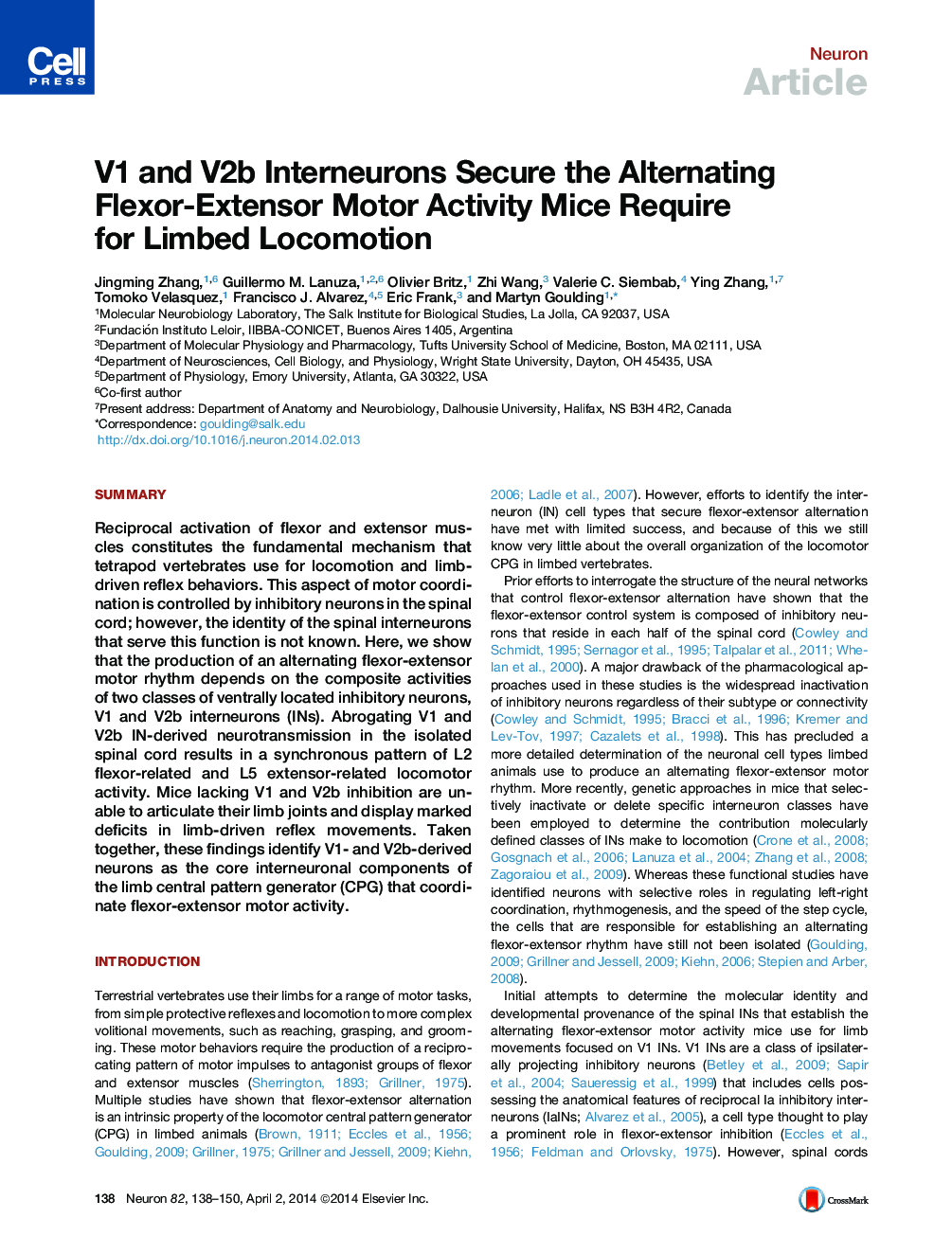| کد مقاله | کد نشریه | سال انتشار | مقاله انگلیسی | نسخه تمام متن |
|---|---|---|---|---|
| 4321087 | 1291569 | 2014 | 13 صفحه PDF | دانلود رایگان |

• Functional identification of the neurons controlling flexor-extensor CPG activity
• V1 and V2b neurons cooperatively control reciprocal flexor-extensor motor behaviors
• Ia inhibitory INs are derived from two genetic sources: V1 and V2b interneurons
• Evolutionary conservation of the neurons used to control flexor-extensor alternation
SummaryReciprocal activation of flexor and extensor muscles constitutes the fundamental mechanism that tetrapod vertebrates use for locomotion and limb-driven reflex behaviors. This aspect of motor coordination is controlled by inhibitory neurons in the spinal cord; however, the identity of the spinal interneurons that serve this function is not known. Here, we show that the production of an alternating flexor-extensor motor rhythm depends on the composite activities of two classes of ventrally located inhibitory neurons, V1 and V2b interneurons (INs). Abrogating V1 and V2b IN-derived neurotransmission in the isolated spinal cord results in a synchronous pattern of L2 flexor-related and L5 extensor-related locomotor activity. Mice lacking V1 and V2b inhibition are unable to articulate their limb joints and display marked deficits in limb-driven reflex movements. Taken together, these findings identify V1- and V2b-derived neurons as the core interneuronal components of the limb central pattern generator (CPG) that coordinate flexor-extensor motor activity.
Journal: - Volume 82, Issue 1, 2 April 2014, Pages 138–150